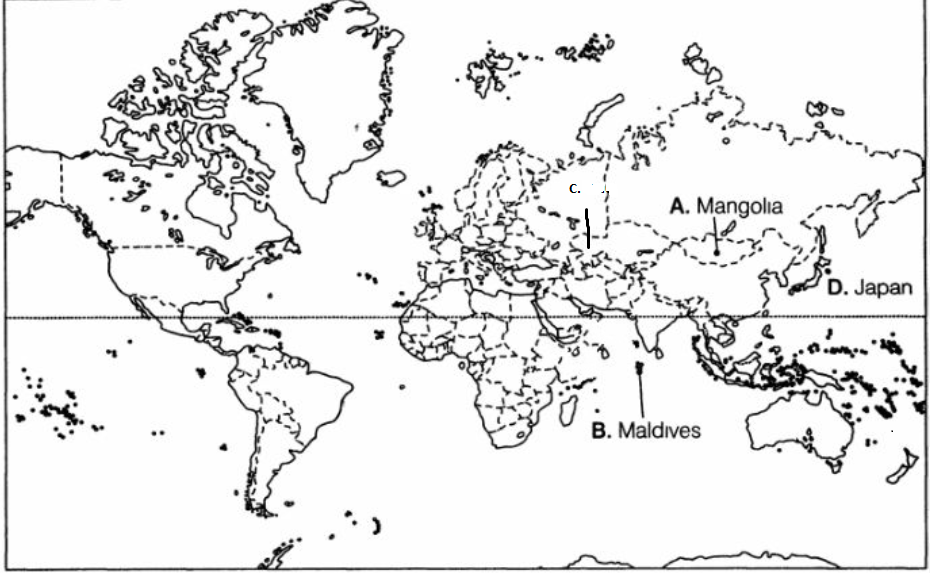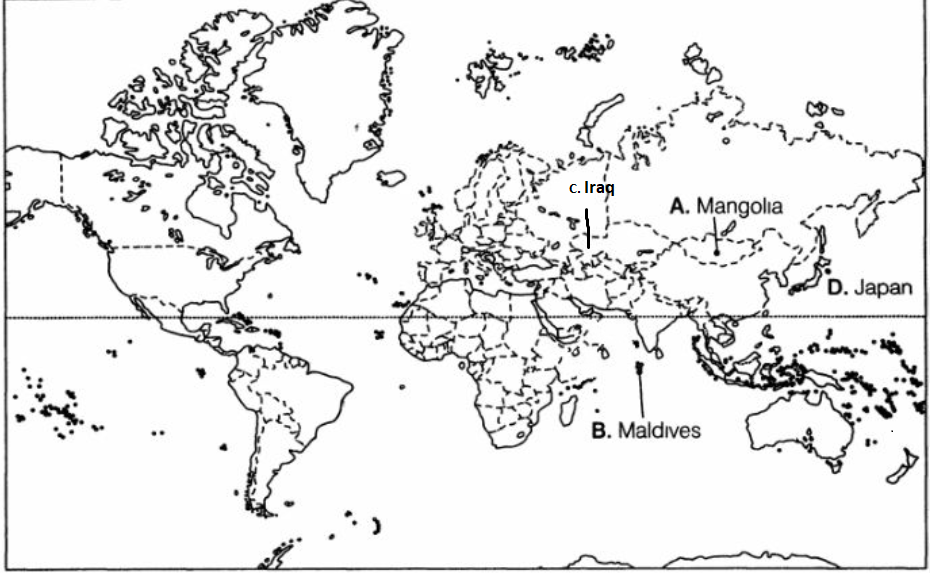
myCBSEguide App
Download the app to get CBSE Sample Papers 2023-24, NCERT Solutions (Revised), Most Important Questions, Previous Year Question Bank, Mock Tests, and Detailed Notes.
Install NowImportant Questions of Class 12 Geography The World Population Distribution, Density and Growth. myCBSEguide has just released Chapter Wise Question Answers for class 12 Geography. There chapter wise Practice Questions with complete solutions are available for download in myCBSEguide website and mobile app. These Questions with solution are prepared by our team of expert teachers who are teaching grade in CBSE schools for years. There are around 4-5 set of solved Geography Extra Questions from each and every chapter. The students will not miss any concept in these Chapter wise question that are specially designed to tackle Board Exam. We have taken care of every single concept given in CBSE Class 12 Geography syllabus and questions are framed as per the latest marking scheme and blue print issued by CBSE for class 12.
CBSE Class 12 Geography Practice Test
Class 12 Geography Chapter 2 Extra Questions
The World Population
- Mention the names of areas where density of population is very low.
- What phenomenon set the stage for the rapid growth of population in the world?
- Name a mineral belt in Africa which has dense population?
- Who are emigrants?
- Write a short note on doubling time of world population.
- Distinguish between Density of population and Physiological density.
- Describe the uneven patterns of population distribution in the world.
- Describe any three characteristics of the last stage of ‘Demographic Transition Theory’.
- Describe in brief five different types of areas of low density of population in the world.
On the political outline map of the world identify:
- The country with lowest density of population in Asia.
- Name the country with smallest population of Asia.
- The country with highest growth rate of population in Asia,
- The country with lowest growth rate of population (1995-2000) in Asia.
The World Population
Answer
- Hot Deserts – Sahara, Kalahari, Atacama and West Australia.
- Extremely Cold Areas – Northern Part of Canada, Greenland and Northern Part of Siberia.
- Cold Deserts – Areas of Central Asia.
- Equatorial Region – Amazon basin of South America and Zaire basin of Africa.
- The expanding world trade during the sixteenth and seventeenth-century set the stage for rapid population growth.
- A mineral belt in Africa which has dense population is Katanga -Zambia Copper belt.
- Migrants who move out of a place are called Emigrants.
- It took more than a million years for the human population to attain the one billion mark. But it took only 12 years for it to rise from 5 billion to 6 billion. Studies show that the doubling time of the world population is reducing fast.
There is a great variation among regions in doubling their population. Developed countries are taking more time to double their population as compared to developing countries. Most of the population growth is taking place in the developing world, where population is exploding. - Density of Population: It refers to the ratio between number of people to the size of land in a country or simply “persons per unit area”. It is usually measured in persons per sq km.Density of Population=Population Area Density of Population=Population Area
Physiological Density: It refers to the ratio between number of people to the size of cultivated land in a country. It is usually measured in persons per sq km.Physiological Density=Total Population Net Cultivated Area Physiological Density=Total Population Net Cultivated Area - At present, world population is more than 7 billion but it is unevenly distributed. There are areas where population density per sq. km is more than 10,000 persons while at other places it is less than 1 person. The remark given by George B. Cressey about the population of Asia is “Asia has many places where people are few and few places where people are very many.” This statement is true as the world’s population distribution is such that in 90% of the land area 10% of people live and in 10% of its land area 90% of people live.
- Generally, 90 per cent of the world population lives in about 10 per cent of its land area.
- The 10 most populous countries of the world contribute about 60 per cent of the world’s population.
- Of these 10 countries, 6 are located in Asia.
- Characteristics of the last stage of Demographic Transition Theory are as follows:
- In this stage both fertility and mortality decline.
- The population is either stable or grows slowly and economic conditions become strong.
- The population becomes urbanised, literate and has high technical know-how. Women’s Status and education is found higher in comparison to other stages.
- The population is unevenly distributed. The areas of different types of low density are as under:
- Difficult terrains and mountains: The areas including mountain ranges with steep slopes, rugged topography have the harsh climate do not attract population. Rocky surface, no soil and other problems also make them the regions of a very low density of population.
- Hot deserts: These are Sahara, Kalahari, Thar, etc. where a low density of population is found because of scanty rainfall and very hot days. These factors do not attract people to settle there. The density of the population is less than 10 people/sq. km.
- Cold deserts: These include the dry areas of Central Asia, Magnolia, and areas of Iran that have a low density of population. The extreme climate with scanty rainfall and hard life restricted population. In these areas, the average density is between 0-3 persons/sq. km.
- Extremely cold and polar areas: In high latitudes around polar regions where snow and ice cover ground for the largest part of the year. Antarctica, a polar continent is total without any permanent inhabitant and the Tundra region around the North Pole have the negligible density of population.
- Dense forest areas: Equatorial forests of Amazon and Zaire restrict people to settle therein. Extreme heat and humidity, marshy land surface and various diseases are the main obstacles for the people to settle there.
- The country with the lowest density of population in Asia. —
- Name the country with the smallest population of Asia. —-
- The country with the highest growth rate of population in Asia, —-
- The country with the lowest growth rate of population (1995-2000) in Asia. —-
Chapter Wise Extra Questions for Class 12 Geography
Fundamentals of Human Geography Chapters
- Human Geography Nature and Scope
- The World Population Distribution, Density and Growth
- Population Composition
- Human Development
- Primary Activities
- Secondary Activities
- Tertiary and Quaternary Activities
- Transport and Communication
- International Trade
- Human Settlements
India – People and Economy
- Population: Distribution, Density, Growth and Composition
- Migration: Types, Causes and Consequences
- Human Development
- Human Settlements
- Land Resources and Agriculture
- Water Resources
- Mineral and Energy Resources
- Manufacturing Industries
- Planning and Sustainable Development in Indian Context
- Transport and Communication
- International Trade
- Geographical Perspective on Selected Issues and Problems

Test Generator
Create question paper PDF and online tests with your own name & logo in minutes.
Create Now
myCBSEguide
Question Bank, Mock Tests, Exam Papers, NCERT Solutions, Sample Papers, Notes
Install Now
